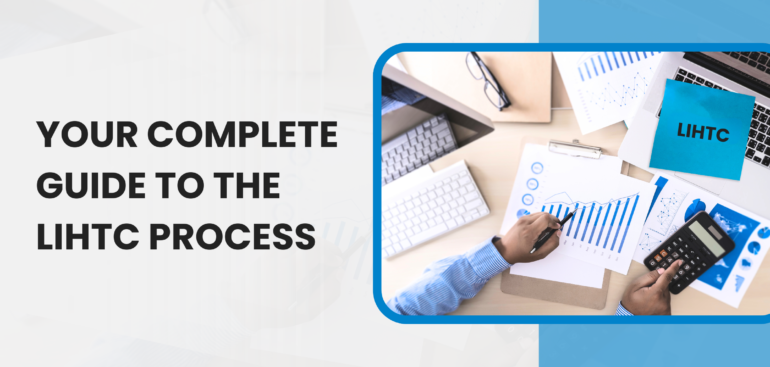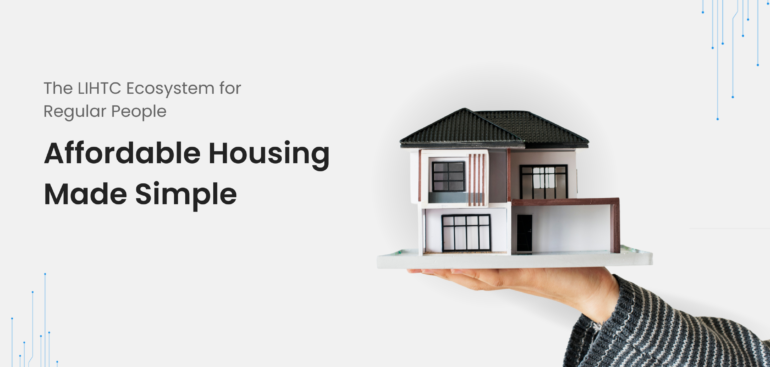Subsidized housing, Section 8, Section 42 – confusing, right? Especially if you are searching for a new place to call home.
But these programs are crucial, providing a lifeline for millions and ensuring low-income individuals and families have safe and affordable housing.
Understanding subsidized housing is key, as it directly impacts many lives. Section 8 offers rental assistance directly to tenants, while Section 42 gives tax credits to developers to keep rents affordable. Each program has a unique role in making housing affordable for low or moderate-income tenants. Both Section 8 and Section 42 housing programs aim to make houses more affordable for Americans. Landlords benefit financially, while renters enjoy lower housing costs. These programs have income limits and prioritize those who struggle to find affordable housing.
Already feeling lost and looking for answers to questions like the difference between Section 8 and Section 42? And how does the market rate fit in? These questions are common, highlighting the complexities of affordable housing.
We’re here to simplify it all, shedding light on affordable housing programs and helping you make informed decisions and find the best options for your needs.
Section 8 Housing
Overview
Section 8, managed by HUD, aims to make housing affordable for low-income families, older people, and people with disabilities. Eligible tenants receive rental subsidies, allowing them to pay a manageable portion of their income towards rent while the government covers the rest.
How It Works
Section 8 bridges the financial gap for tenants, covering the difference between what they can afford and the market rent. Tenants usually pay 30% of their monthly adjusted income towards rent, with HUD compensating landlords through Housing Assistance Payments (HAP). This ensures landlords receive the full market value, encouraging their participation.
Qualifying
Applicants apply through local HUD or public housing authorities to qualify, providing detailed information about their income, assets, and family size. Income must not exceed 50% of the area’s median income. Special conditions allow full-time students to qualify under certain circumstances. Once eligibility is determined, applicants are placed on a waiting list until a voucher becomes available.
Renting
Tenants pay 30% of their income towards rent, with HUD paying the remainder directly to the landlord. Tenants can request a rent adjustment if their income changes during the year through an “Interim Recertification,” and they must undergo annual income verification. Due to high demand, waiting lists can be long, with some areas using lotteries to select tenants. Public housing agencies may close their waiting lists if they become too lengthy to manage efficiently.
Verification and Compliance
Strict adherence to HUD guidelines is required for income verification, including using the Enterprise Income Verification (EIV) system. Participating properties must fully comply with these standards to maintain eligibility and proper subsidy allocation.
Section 42 Housing
Overview
Section 42 is part of the affordable housing program called the Low-Income Housing Tax Credit (LIHTC). Unlike Section 8, which helps with rent directly, Section 42 gives developers tax breaks, helping them to build or fix up affordable rental homes and offer lower rents to people who need them.
How Section 42 Works
Under Section 42, developers get tax credits for building or renovating housing. They must rent these homes to low-income tenants at affordable rates. These tax credits help cover the building costs and make the projects financially viable. In return, some apartments must be saved for people earning less than 60% of the area’s average income, with rents set at levels they can afford.
Qualifying for Section 42 Housing
Eligibility for living in Section 42 housing depends on the tenant’s income relative to the area median income (AMI). Apply directly to the housing community, where they’ll check your income, family size, and student status. Usually, full-time student households can only live here if they meet special rules. This helps make sure the housing goes to those who need it most.
Renting Section 42 Housing
In Section 42 housing, rent isn’t based on your income but is set at an affordable level for people in the area. Even if your income increases, your rent stays unchanged during your lease. This stability is a significant benefit for tenants who might otherwise face rent increases in non-subsidized housing. However, unlike Section 8, there is no mechanism for rent adjustment if a tenant’s income decreases.
Administration and Compliance
Section 42 housing is managed by State Housing Agencies (SHAs), not HUD. These agencies ensure developers follow the rules, like keeping rents affordable for at least 15 years.
Educational Opportunities
People working with Section 42 properties often take training courses, like the NCHM’s Tax Credit Specialist (TCS) class. This helps them understand the rules and how to manage these properties well.
Section 8 Vs. Section 42
Here’s a tabular comparison of Section 8 and Section 42 housing –
| Parameter | Section 8 Housing | Section 42 Housing (LIHTC) |
| Subsidy Type | Direct rental subsidies provided through Housing Assistance Payments (HAP). Tenants pay 30% of their income, and HUD covers the difference. | No direct rental subsidies. Tax credits are given to developers to offset costs, allowing lower rents. |
| Application Process | Applicants must apply through their local Public Housing Authority (PHA). The PHA assesses eligibility based on income and family size. | Applicants apply directly with the property manager of the LIHTC housing community. |
| Eligibility Requirements | Open to U.S. citizens and eligible immigrants. Income typically must be at or below 50% of the area’s median income (AMI). | Generally open to anyone meeting income criteria. Typically requires income at or below 60% of the AMI. Immigration status requirements may vary. |
| Income Verification | Requires thorough verification, including the use of HUD’s Enterprise Income Verification (EIV) system. | Income is verified based on LIHTC guidelines. Does not use EIV system. Verification standards are set by State Housing Agencies (SHAs). |
| Waiting List | Frequently has long waiting lists due to high demand. Lists may be city or town-specific and can be closed when it is too long. | Waiting lists may exist at individual properties but are generally shorter than those for Section 8. |
| Lease Flexibility | Tenants can move to new properties with appropriate notice and lease termination if the new property meets program standards. | Tenants can move at the end of their lease term. They must go through the application process again for the new LIHTC property. |
Leveraging Technology with LIHTC Software for Affordable Housing
Understanding subsidized housing, Section 8, and Section 42 can be daunting. However, the process becomes easier with the proper knowledge and technology.
Subsidized housing is vital for low-income individuals and families, offering stability. Section 8 directly assists tenants by bridging rent gaps, while Section 42 provides tax incentives to developers, ensuring affordability.
Technological advancements, especially in LIHTC software, are incredibly valuable for affordable housing programs. These tools simplify the application process, enhance compliance, and simplify management tasks. Using LIHTC software, stakeholders can better handle the complexities of Section 8 and Section 42 housing, ensuring that resources are efficiently allocated and eligible families get the support they need.
In short, leveraging technology, particularly LIHTC software, makes navigating affordable housing much smoother. It adds transparency and efficiency to the process, helping everyone involved understand and manage it more easily.





